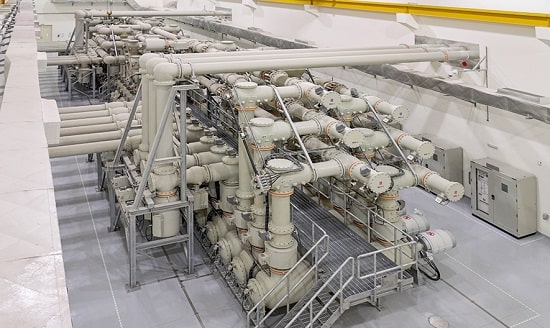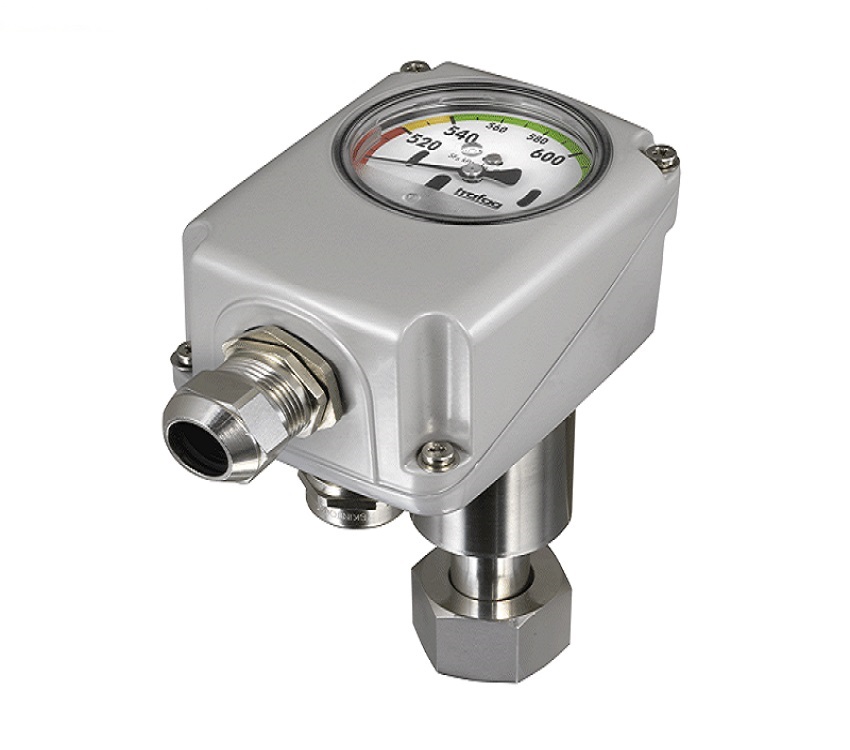
1. What are the latest sensor techniques for real-time condition monitoring of high-voltage gas-insulated switchgear, and how do they improve reliability?
Answer:
Recent advances in condition monitoring for Gas‑Insulated Switchgear (GIS) include multi-parameter sensor systems installed either during manufacture or via retrofit. Key technologies include:
Gas-density and pressure sensors (for SF₆ or alternative gas) that track leakage or changes in gas quality.
Partial Discharge (PD) sensors using Ultra-High Frequency (UHF) couplers, optical/photonic sensors, and acoustic emission (AE) sensors. These can detect incipient insulation faults inside the gas-insulated enclosure.
Thermal/infrared monitoring of contact/connection hotspots (busbars, interrupters) to detect early heating and degradation.
Mechanical or vibration sensors on breaker drives to detect abnormal mechanical behaviour (wear, slow operation) under varying current loads.
Data-integration platforms (Edge/IoT) that transmit sensor data for trending, AI-driven diagnostics, and predictive maintenance.
The benefits of real-time monitoring include reduced unplanned outages, extended asset lifetimes (through early fault detection), improved safety, and lower maintenance costs. For example, a well-instrumented GIS can detect a developing insulation fault (via PD) before a catastrophic failure.
Practical tip: When specifying a monitoring system, ensure the sensors support your communication protocol (e.g., IEC 61850) and can be retrofitted if needed. Also, ensure threshold alarms/trending are configurable.
2. How can partial discharge (PD) monitoring in GIS be deployed in an “online” setting, and what are the key parameters to watch?
Answer:
Online PD monitoring in GIS means detecting and analysing PD activity while the equipment remains energized and in service. This is increasingly feasible with UHF sensors, optical sensors, and acoustic sensors. The key steps and parameters are:
Install appropriate sensors (UHF antennas, optical fibre, AE transducers) around the GIS compartments or bushings so that PD signals propagate to the sensor.
Record the PD burst count, pulse amplitude/time-to-ground, phase-resolved PD patterns, frequency spectra (for UHF), or optical burst timing. The trends and shifts provide an indication of worsening defects.
Monitor gas by-products (for SF₆ systems) or detect ozone/SO₂/CO by chemical sensor methods, since PD in SF₆ can produce gaseous decomposition products.
Establish thresholds (alarm/warning) based on baseline “healthy” conditions and historical patterns. Use trending to detect a gradual increase in PD activity rather than one single event.
Key parameters: PD magnitude (pC), number of pulses per period, pattern shift versus phase angle, UHF frequency content, acoustic amplitude/time, location estimate (if multi-sensor).
Considerations:
PD detection sensitivity depends on sensor location, signal-to-noise ratio, and the enclosure’s electromagnetic shielding.
False alarms can be caused by switching noise; filtering/analysis is needed.
It’s critical to integrate PD results with other sensor data (gas, temperature, and mechanical) for holistic asset health.

Installing locations for UHF sensors: (a) GIS; (b) cable terminal; (c) power transformer.
Photo source: Application of UHF Sensors in Power System Equipment for Partial Discharge Detection: A Review article Research Gate website.
3. With rising concerns about SF₆-gas handling and environmental impact, what new monitoring methods are emerging for gas-density and leakage in GIS?
Answer:
Given that SF₆ has a very high global-warming potential (GWP) and that GIS relies on gas insulation, monitoring of gas density (and leakage) has become a focal point. New methods include:
High-precision gas-density sensors and pressure sensors are integrated into the GIS compartments to track real-time gas pressure and detect slow leaks or drops. Gas-quality sensors that detect trace amounts of SF₆ decomposition products (SO₂, H₂S, CO) or alternative mixtures (CO₂/N₂) to assess insulation-gas health.
Wireless/IoT monitoring modules that can transmit gas-density and leakage alarms directly to control rooms or asset-management software.
Use of digital twin or data analytics to correlate gas-density behaviour with temperature, load, and time-based trends — thereby providing early warning of abnormal leaks or slow degradation.
For future systems—use of alternative insulating gas mixtures (e.g., fluoroketones, ones with lower GWP), which also need dedicated monitoring of concentrations and eventual gas-switch-over tracking.
Best practice tip:
Establish a baseline for each GIS bay when new or recently serviced; then continuously monitor gas density drift. Set up multi-level alarm thresholds (e.g., warning at –5 % gas density, critical at –10 %). Include gas quality sensor alarms for trace by-products.
4. How does AI/data analytics (including digital twin modelling) enhance GIS monitoring beyond simple sensor thresholds?
Answer:
While sensors provide raw data (pressure, temperature, PD counts, etc.), the next step is turning that data into actionable insight via AI, machine learning, and digital-twin modelling. Here’s how:
Trend-analysis & anomaly detection: Instead of fixed thresholds, ML models can learn “normal” behaviour for each GIS unit (e.g., daily load profiles, temperature vs ambient). When the behaviour deviates (e.g., temperature rise while load constant), the system flags anomalies. This reduces false alarms and catches subtle faults earlier.
Fault-mode classification: Using feature extraction (e.g., from UHF PD signal spectra), neural nets can classify types of defects (metallic protrusion, corona, discharge on insulator) rather than just count events. For example, recent research shows PD-signal classification in DC GIS using neural networks.
Digital twin of GIS bay: A virtual model of the actual GIS (including geometry, conductor positions, insulation gas properties, and mechanical drive conditions) is updated in real time with sensor data. This enables simulation of future degradation, estimation of the remaining lifespan of components, and “what-if” scenarios (e.g., load increase, colder ambient, higher humidity).
Predictive maintenance scheduling: By combining data from multiple GIS bays, the system can rank which bays have the highest risk of failure, schedule maintenance just-in-time, and optimize spare-parts inventory. The result: minimal downtime, optimized maintenance cost.
Integration with asset-management & SCADA: The analytics platform can feed dashboards, KPIs (e.g., “Mean Time Between Alerts”, “Health Index”), and interface with SCADA/IEC-61850 controllers, enabling real-time visibility and decision support for engineers and managers.
Implementation notes:
Data quality is critical: ensure correct sensor calibration, timestamping, and synchronized data streams.
Define the “health index” metric for each GIS bay (may include a weighted combination of PD activity, temperature rise, gas-density drift, and mechanical operation counts).
Ensure cybersecurity for IoT/remote monitoring modules.
Start with a pilot to calibrate the AI model on known fault scenarios before full deployment.

SF6 gas density monitoring
5. What are key performance indicators (KPIs) and decision-criteria engineers/managers should use when selecting a GIS monitoring system?
Answer:
When specifying or selecting a monitoring system for high-voltage GIS, it is vital to have measurable KPIs and decision criteria tailored for reliability, maintainability, and cost-effectiveness. Key considerations include:
Sensor coverage and granularity
What fraction of bays/equipment (contacts, interrupters, bushings, busbars) are instrumented?
Are sensors easily retrofittable or only in new units?
Detection sensitivity and accuracy
Minimum detectable PD magnitude (in pC) or UHF amplitude.
Gas-density measurement resolution and drift.
Temperature measurement accuracy and hotspot detection threshold.
Time-to-alert / real-time capability
How quickly does the system detect anomalies and issue alarms?
Is streaming data available, or only periodic polling?
Communication & integration
Support for IEC 61850, Modbus, OPC/UA, or proprietary protocols.
Cloud/Edge deployment options, remote access, dashboard/reporting.
Data-analytics capability
Does it include built-in trend analysis, machine-learning modules, and digital-twin modeling?
Support for integration with asset-management/ERP systems?
Reliability, maintenance, and lifecycle cost
Sensor lifetime, calibration intervals, and system redundancy.
Ability to retrofit into existing GIS without a major outage.
Return-on-investment (ROI) and risk-reduction
What is the expected reduction in outages, maintenance costs, and downtime?
What risk of catastrophic failure remains unmonitored?
Environmental and regulatory compliance
Monitoring for SF₆ leakage (which may incur environmental-cost penalties).
Future-proofing for new insulating gases, emissions regulation.
Example KPI summary for a monitoring project:
Baseline: PD < 5 pC, gas-density drift < –2 % per year, interrupt or temperature delta < 30 °C over ambient.
Alert thresholds: PD bursts increase by > 50 % over baseline; gas-density drift > –5 % in 3 months; temperature hotspot > 40 °C above ambient.
Target: Reduce unplanned GIS outages by 30 % over the next 5 years; reduce maintenance cost by 15 %; enable remote diagnostics for ≥80 % of bays.
By defining these KPIs early and aligning your monitoring system procurement with them, you ensure the monitoring system adds measurable value, rather than simply “another sensor”.
Conclusion:
The field of GIS monitoring is evolving rapidly: sensor technologies (PD, gas density, temperature, vibration) are mature; however, the real differentiator now is data analytics, predictive diagnosis, and integrated asset-management systems. For high-voltage switchgear (GIS), whose failures can be extremely costly (both in repair and outage terms), the investment in advanced monitoring is well justified. Engineers and managers must align their monitoring strategy with clear KPIs, retrofit‐capability, and long-term data-driven maintenance planning.




That’s a very clear and relevant article showing how this topic can add a real value both for a sustainable, safe and reliable power set of power system assets and climatic changes targets realization. And Siemens Energy Blue Portfolio is a good solution for those demands, committed to turn the future into different from today !
Thank you for your comment.